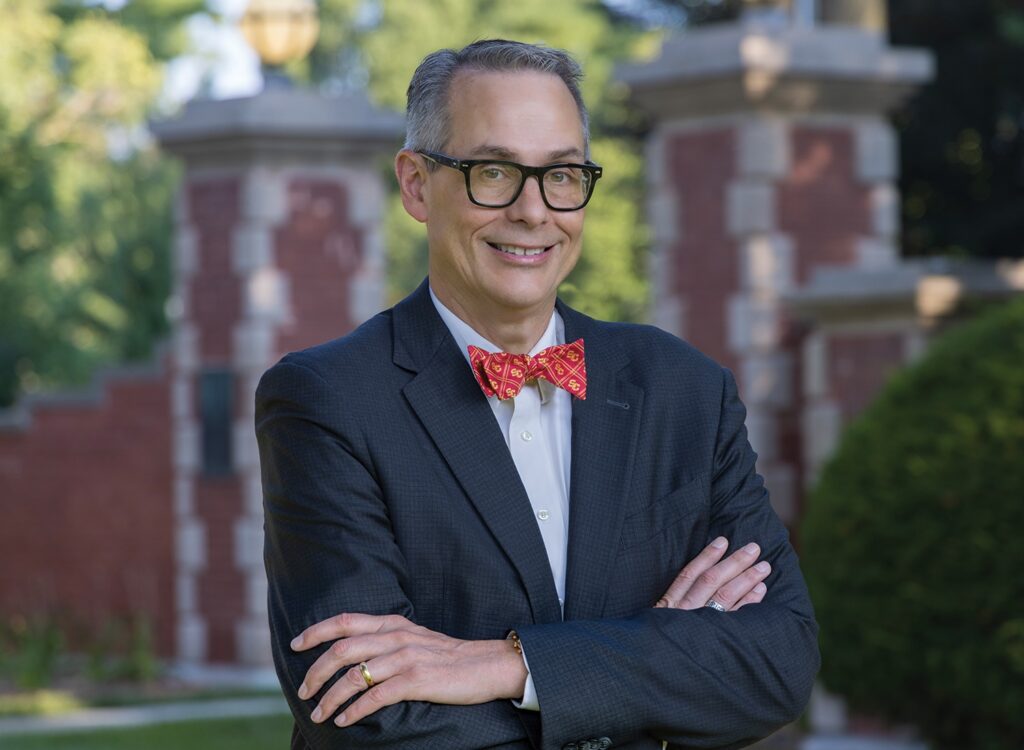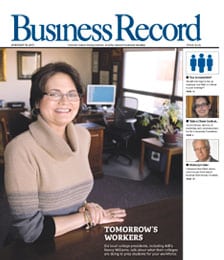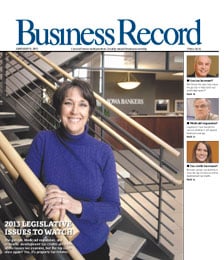BioForce hopes to hit it big with nanotechnology

“Tiny” is big, and possibly on its way to huge. Nanotechnology, a term that covers a wide range of research on incomprehensibly small objects, has attracted $1 billion worldwide from venture capitalists and draws $4.7 billion every year from governments in Asia, Europe and North America, according to a recent Business Week article.
In Ames, the industry’s hopes are reflected in this spring’s move of BioForce Nanosciences Inc. to a 6,000-square-foot home for its offices, laboratories and workshop. The company started in 1994 in a one-room “incubator” space in the Ames Research Park, then moved to a larger office. The latest move to 1615 Golden Aspen Drive brought manufacturing space and enough elbow room to expand the company’s 17-person staff – possibly doubling it by the end of 2006.
But the need for manufacturing and expansion depends on finding customers for BioForce’s primary product. Management hopes this is the breakthrough year.
The NanoArray System is designed for biomedical purposes and priced at $125,000. “We introduced this product line in January, and haven’t sold one yet,” said Kristi Harkins, director of business operations. “But nanotech is a hot area, and we have had interest from some big companies.”
They have competition, too. Business Week reported that 1,200 nanotech start-ups have popped up around the world, half of them in the United States. However, the magazine also noted that many nanotech pioneers have not delivered on their promises, and the initial public offering hopes of the industry have cooled.
Some nanotech companies are striving to simply improve the materials used in everyday products, and some are intent on reinventing the computer. BioForce focuses on medical applications, such as detecting viruses and conducting biopsies, and the company wants to distinguish itself with seemingly opposite strengths – it produces extremely small sample sizes and prints them on unusually large arrays.
“Our competition makes spot sizes 100 times larger than ours,” Harkins said. “We view them as potential partners, because they have an existing market and know the customers.”
The minuscule samples used by the company’s NanoArray System allow researchers to run many tests with very little material from a precious sample – such as spinal fluid or a newborn’s blood – and also make the analysis process quicker and more accurate, Harkins said. The spots are so small that 30 of them could fit across the width of a human hair.
According to company literature, “This technology creates, for the first time, the opportunity to easily produce ultraminiaturized and sensitive biochips, biosensors and biodevices with utility in several large market segments.”
Those segments, Harkins said, include drug delivery methods; molecular diagnostics in the health field; molecular detection in the security area –such as remote sensors to detect toxins in air or water; atomic microscopy; and nanotech instrumentation, which refers to the likelihood that “they’ll do something with this totally unrelated to the original purpose,” Harkins said. “Maybe they’ll use it to write coded messages” that would be impossible to read without a powerful, high-tech microscope.
Several contacts have resulted from a recent magazine mention; in January, Red Herring named BioForce Nanosciences among 10 nano-bio start-ups on its list of top 100 innovators.
Eric Henderson, a professor of genetics, development and cell biology at Iowa State University, founded the company as a vendor of accessories in atomic force microscopy and now serves as chief science officer, treasurer and secretary. Laurence Russ, the president and chief executive officer, brought business expertise to BioForce with his background as an executive with Johnson & Johnson Co.; he joined the company in 2003 and lives in Canada.
“Eric has been very successful in maintaining some source of funding over the past five years,” Harkins said. “He’s proud that all of our products currently available were developed through Small Business Innovative Research grants.”
The company has received $5 million in government grants over the years and is currently working to raise $8 million from investors. That effort began in February and will run through June. BioForce also is starting discussions with the state of Iowa about funding grants.
The Red Herring article noted that “BioForce has struggled to convince some nanotech-skeptical venture capitalists to back it.” Harkins acknowledged that problem. “Being in Iowa won’t be a stumbling block in making sales, but it can be in raising money,” she said. “We have people in the field who are real good at qualifying VCs – finding those who understand the technology. Most of the existing VC base is on the East and West coasts; that’s why our sales manager and product manager both live in California.”
The company is focusing on U.S. and North American sales, but also is setting up distributorships in several other nations.
BioForce holds three licensing agreements with Iowa State and two patents, with at least 29 more patent applications pending in the United States and internationally.
“We’ll probably get one or two patents in the next year,” Harkins said. “It’s an expensive process, and it takes two or three years to get a patent.”
THE STRANGE WORLD THAT WE CAN’T SEE
Because nanotechnology applications occur at an invisible scale, it’s hard to understand its processes and grasp its potential. Here are some excerpts from a Business Week magazine article that make the picture clearer:
“Researchers have discovered that matter at this tiny scale often behaves very differently. While some of the science behind this phenomenon is still shrouded in mystery, the commercial potential of the infinitesimal is coming sharply into focus. Familiar materials — from gold to carbon soot — display startling and useful new properties. Some transmit light or electricity. Others become harder than diamonds or turn into potent chemical catalysts. What’s more, researchers find that a tiny dose of nanoparticles can transform the chemistry and nature of far bigger things, creating everything from fortified fenders to superefficient fuel cells. Engineers working at the nano scale have a brand-new tool kit that’s full of wonder and brimming with potential riches. . . .
“The biggest markets for nanoparticles remain in familiar products, from the black rubber filler in tires, a $4 billion industry, to the silver used in traditional photography. Lux Research Inc., a New York nanotech market researcher, estimates that only $13 billion worth of manufactured goods will incorporate nanotechnologies this year. That’s little more than a rounding error in the global economy.
“Yet new nano-based products that could have a far bigger impact are only a step or two away. Within the next two years, diagnostic machines with components built at the nano scale should allow doctors and nurses to carry pint-size laboratories in their briefcases, perhaps to test for HIV or count white blood cells on the spot. Nano sensors will scour airports and post offices for anthrax and sarin. Toward the end of the decade, scientists say, new computer memories composed of nanoparticles could conceivably pack the digital contents of the Library of Congress into a machine the size of a yo-yo.”







